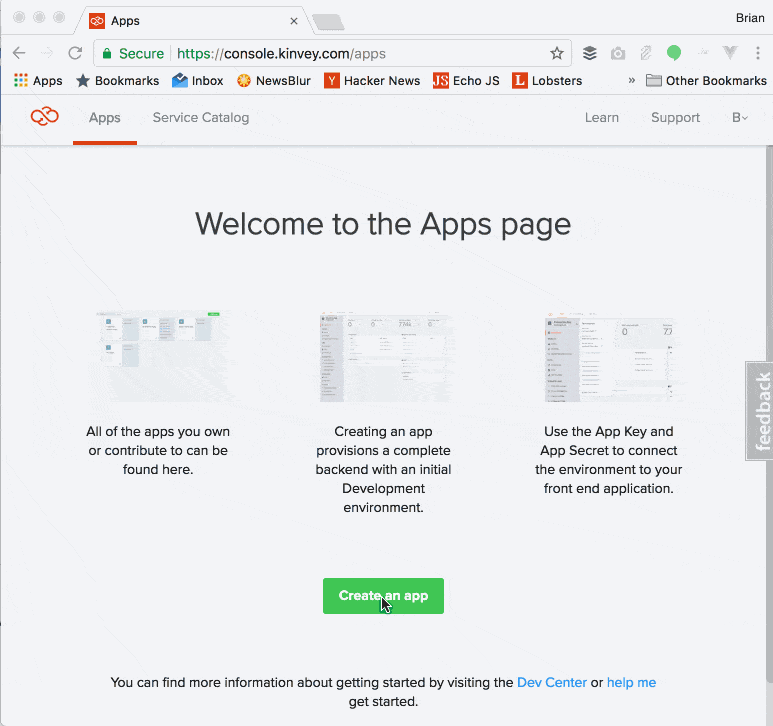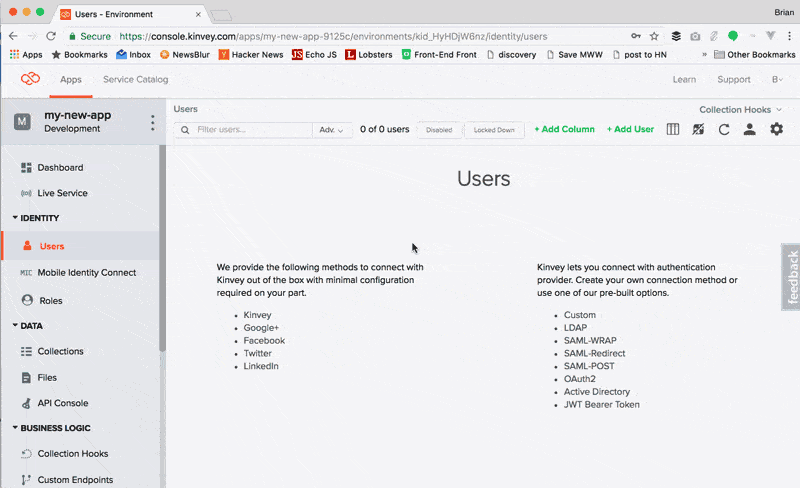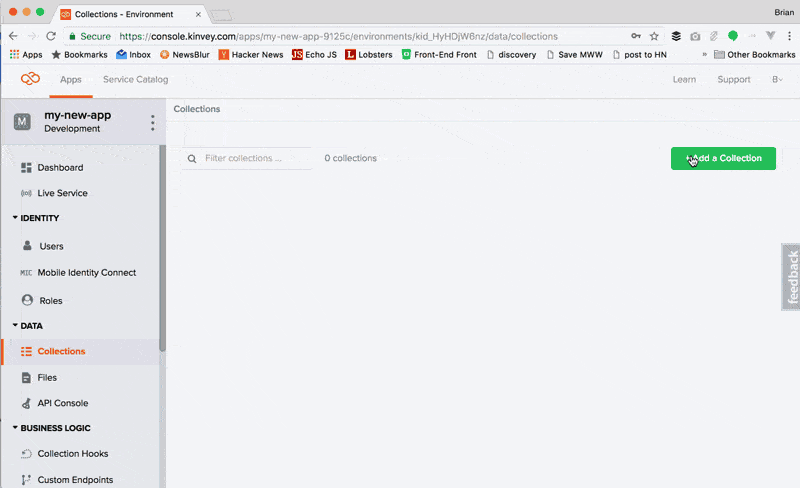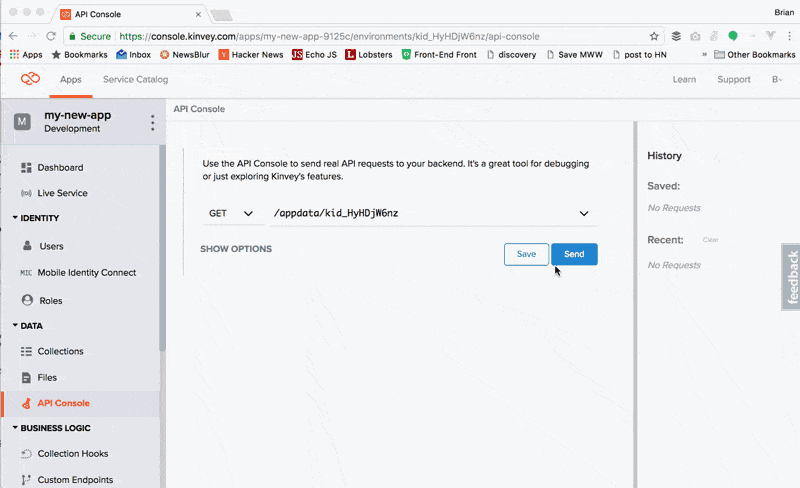Fast Start to Serverless Enterprise Apps on Kinvey

Progress Kinvey is a feature-packed high productivity platform designed to help you build apps quickly. In the first post in this guide, learn how to navigate the console and get started developing applications on Kinvey.
Thanks for giving Progress Kinvey a try! I wanted to take this opportunity to help you get familiar with some of the key features in Kinvey and how to use them in your application.
I should take a moment to note that, during the portions of this series that discuss actual application code, we'll be using the HTML5 version of the Kinvey SDK, but most of what we'll discuss today will work almost identically across other versions of the SDK. Plus, everything we discuss with regard to Kinvey's web interface (which we refer to as the Kinvey console) will remain applicable, regardless of which SDKs you choose to use.
Let's get started!
Getting Comfortable with the Console
When you're not writing code to work with Kinvey services, much of your interaction with Kinvey will come via the web console, so let's take a few minutes to explore what is there.
I'll assume that you've already created an account. After that, the first thing that you'll want to do is to create an app. A Kinvey app is essentially a container for all the Kinvey services that you'll use across the application you are building.
From the apps page, click on "Create an app" button. Give the app a name and then click "Create app."

Now that we've created our app, let's explore some of the key sections you'll want to explore.
Users
Practically every application needs some form of authentication. Kinvey provides a number of ways to handle authentication and the users section of the Kinvey console is where you'll manage most of it.
The console allows you to manually create users or add columns of data to the users table. In most cases, however, you'll use the console for managing existing users that are registered via your application code. You can manage things like adding roles to a user (assuming you've set some up), resetting their password or deleting the user entirely. All of these features are also available to your application via the SDKs or REST API.

If you are looking to integrate your application's authentication with an existing enterprise authentication or social identity solution, you'll want to explore Mobile Identity Connect.
We'll talk more about users in the "Managing Users in Kinvey" post later in this series, which will be published in the coming days, so stay tuned.
Collections
In simple terms, collections represent the data for your application - they are your cloud data store. However, Kinvey offers a ton of additional features that can make them much more than just a simple data store.
Within the Kinvey web console, we can create collections - think of these as similar to a table in a database. We can also manually add columns to the collection, add or modify the data as well as manage the various settings related to this collection. Again, most of these features are also available via code using the SDKs or REST API.

Collections can be tied to an external data source, whether they are REST APIs, SQL databases, Salesforce or a variety of other third-party data sources. If you are interested in those features, be sure to learn more about Kinvey features like RapidData and FlexServices.
API Console
The last thing that we'll take a look at here is the API console, which can be a useful tool when you want to test your Kinvey services and see what the results would look like.
The API console essentially uses the REST API to make GET, POST, PUT or DELETE requests against any of the services you've set up in Kinvey, including things like users, collections or custom endpoints. It also offers options for changing the type of authentication used with the request as well as modifying the headers. It'll even remember your recent requests and allow you to easily click and rerun them.

This is a handy tool when you want to run quick tests of services before diving into the code.
Much More
One important thing to remember as you get started is that Kinvey is a serverless high productivity platform—developers who use it don’t have to worry about infrastructure, they can just focus on innovation. To learn more about what serverless means for developers, check out this blog post.
Obviously we've only gone through the very basics of the Kinvey web console, but hopefully this gives you what you need to start exploring and dig deeper.
As I mentioned above, stay tuned for the next post in this series on managing Users in Kinvey, or for a hands-on approach, feel free to sign up for a free trial and check it out today.

